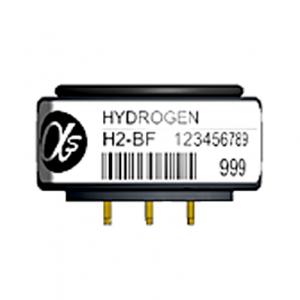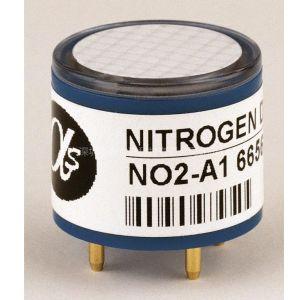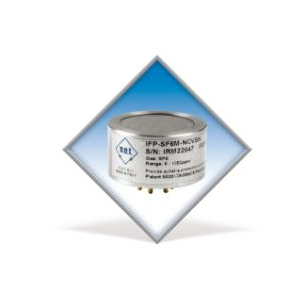The electric power industry, as the backbone of my country’s economy, has developed rapidly since the reform and opening up, ensuring a stable supply of electricity for the whole society and injecting continuous power into my country’s modernization construction. In recent years, with the implementation of strategies such as “West-East Power Transmission”, the power network has expanded like a spider web, and power security has entered a new era. However, the dangerous gases derived from the power production process are like hidden killers. Once out of control, they may cause immeasurable losses to the national economy and people’s lives.
To safeguard this source of light, it is crucial to closely monitor the gases produced during electricity production. So, what are these potentially dangerous gases?
On the big stage of the electric power industry, hydrogen has become a commonly used cooling medium for generators due to its excellent heat transfer and heat dissipation properties. However, hydrogen leakage may have catastrophic consequences, so we are always vigilant about its presence in generators and hydrogen production stations. Combustible gas, as the “source of energy” in power plants, is widely used in boiler rooms, heating rooms and other places. However, the leakage of these gases cannot be underestimated. Generator units, gas pressure regulating stations, fuel storage areas and other places are all areas that we need to focus on.
The water supply system of a power plant is like the blood of life, but corrosion will inevitably occur after long-term operation. In order to protect this “vein of life”, we added ammonia to adjust the pH of the water and prevent the spread of corrosion. However, the dangers of ammonia cannot be ignored. Its leakage may cause poisoning and explosion accidents. Therefore, the detection of ammonia is also a top priority in our work.
In the process of desulfurization and denitrification of coal-fired units in the electric power industry, large amounts of sulfur dioxide and nitrogen oxides will be produced. If these gases are discharged into the air without treatment, they will cause serious pollution to the environment. Therefore, we must strictly test their content to ensure that they will not cause harm to our homes.
Sulfur hexafluoride, the “insulation master” and “arc extinguishing expert”, is widely used in high-voltage equipment. However, it is also an “invisible killer”. We cannot take it lightly because of its strong greenhouse effect and the harm it may cause to the human body when mixed with oxygen.
It can be seen that there are many types of dangerous gases hidden in the power industry, and each has its own power. In order to ensure the safety of our environment and life, it is imperative to closely monitor the concentrations of these gases. The Industry and Mining Network recommends the following gas sensors to you :
British Alphasense Hydrogen Sensor-H2-BF
Hydrogen sensor H2-BF has high performance. It has the advantages of small size, high sensitivity, good selectivity, and good low-concentration output linearity. The response time is 100s, the measuring range is 0~5000ppm, the working environment is -30~55℃, 15~90%RH, and it is mainly used to detect the atmosphere. The concentration of hydrogen is typically used in hydrogen gas transmitters and various hydrogen detection occasions. The
four-electrode electrochemical ammonia sensor NH3-B1 is mainly used to detect the concentration of ammonia in the atmosphere. NH3-B1 is a four-electrode electrochemical ammonia sensor. Sensor, linear current output, easy signal processing, high sensitivity, suitable for use in harsh environments, typically used in ammonia gas transmitters and various ammonia detection occasions.
British Alphasense Sulfur Dioxide Sensor – SO2-AF
Sulfur Dioxide Sensor SO2-AF electrochemical sensor has high sensitivity and good selectivity. It can filter dust and small water droplets. It has good low-concentration output linearity and good stability. The measuring range is 0~50ppm. The working environment is -30~50℃, 15~90%RH, resolution 0.1ppm, mainly used for flue gas analyzers and handheld SO2 alarms.
British Alphasense nitrogen dioxide sensor – NO2-A1
nitrogen dioxide sensor NO2-A1 electrochemical sensor has high sensitivity, good selectivity, can filter dust and small water droplets, has good low-concentration output linearity, good stability, and is resistant to CO, CO2, H2 interference and other advantages, the measuring range is 0~20ppm, the working environment is -20~50℃, 15~90%RH, the resolution is 0.02ppm, it is mainly used for flue gas analyzers and handheld NO2 alarms.
Italian NET SF6 sensor NDIR sensor IFP32-SF6M-NCVSP , IR series infrared gas sensor uses NDIR technology to monitor the presence of SF6. The technology is based on the principle that gases have unique, well-defined light absorption curves in the infrared spectrum that can be used to identify specific gases. Gas concentration can be determined by using an appropriate infrared light source and analyzing the energy absorbed by the gas in the light path. Its signal linearization and temperature compensation are ideal for instrument manufacturerswithout special knowledge of IR technology
Dangerous gases generated during the power production process include hydrogen, flammable gas, ammonia, sulfur hexafluoride, nitrogen oxides, sulfur dioxide and other gases. These gases can cause certain damage to the environment or human body. In order to reduce or avoid hazards, the use of gas sensors in the power industry is indispensable. Customers in need can consult the technical engineers of the Industry and Mining Network online.
productsmenu
cindy@justwellcenter.com+86 13376981664
You are here:
- Home
- Industry News
- Detection of dangerous gases in…






